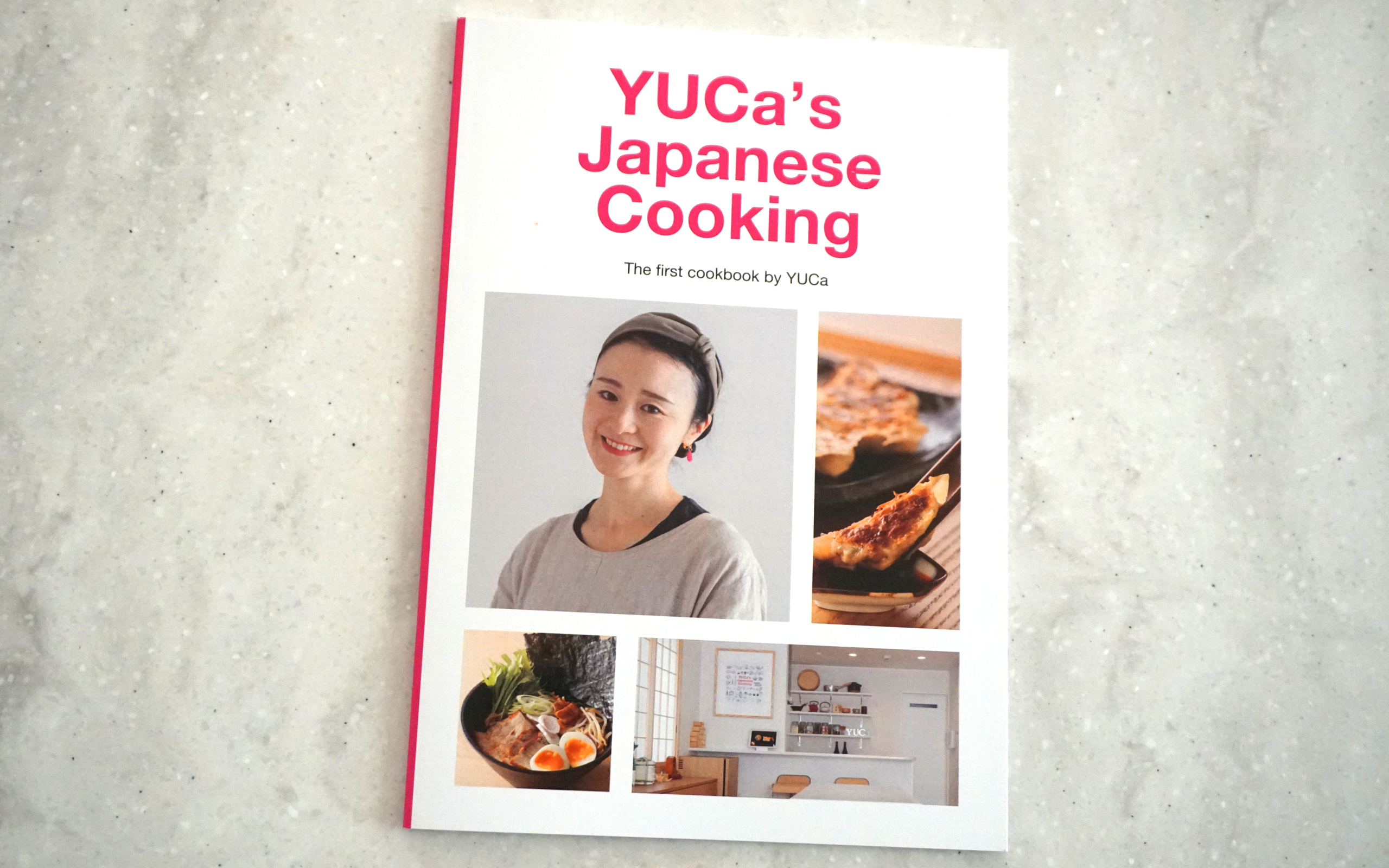Japanese Home Meals : 3

Menu:
– Miso soup with silken tofu, rapeseed flower and eggplant [Recipe]
– Japanese rice with BarleyMax barley [Recipe]
– Chikuzen-ni (Simmered chicken and vegetables) [Recipe]
– Harusame salad (Glass noodle salad)
– Cucumber and bean sprout salad with yukari (dried red shiso)
Paired tea:
– YUCa’s Tea : Chiran Cha
Recipe : Chikuzen-ni

Chikuzen-ni (筑前煮) is a traditional Japanese simmered dish that originated in Fukuoka Prefecture, formerly known as Chikuzen Province. Chikuzen-ni is made by simmering chicken and root vegetables—mainly burdock root, lotus root, carrot, shiitake mushrooms, and konnyaku—in a sweet and savory broth seasoned with soy sauce, mirin, sake, and sugar. The dish is known for its well-absorbed flavor and gentle, comforting taste that pairs perfectly with rice.
Read More
Japanese Food for Kids : 3

Menu:
– Rice and nori chips [Recipe]
– Teriyaki salmon [Recipe]
– Sesame salad with cabbage and cucumber [Recipe]
– Miso soup with tofu and komatsuna [Recipe]
– Cheese
– Orange
Behind the scenes:
This time as well, I created a menu themed around a traditional Japanese breakfast. For the soup, I chose miso soup packed with leafy greens and protein. The rice dish is a chip-style rice ball, made by sandwiching rice between sheets of nori and cutting it into bite-sized pieces so it’s easier for children to eat. For the main dish, I prepared the classic grilled salmon. As a side dish, I included a salad with vegetables that children often tend to avoid, dressed in a sesame sauce to make them more appealing. Additionally, I included processed cheese to help with calcium intake, and for dessert, an orange to provide a boost of vitamins.
Note : This recipe was first submitted on December 14, 2020, and resubmitted on April 10, 2025, to reflect additional information.
Candy Apple
A candy apple is a sweet treat made by coating an apple with a layer of sugar or syrup. In Japan, it is a classic festival snack, often seen at food stalls during traditional events and fairs.

Characteristics of Candy Apples
1.Crunchy Candy Coating
When the sugar hardens, it creates a crispy texture, contrasting beautifully with the apple’s natural crunch.
2.Sweet and Tangy Apple Flavor
The sweetness of the candy coating balances perfectly with the apple’s natural tartness, offering a refreshing aftertaste.
3.Glossy and Eye-Catching Appearance
The shiny, red coating gives candy apples a vibrant and attractive look. Recently, variations with colorful coatings or decorative patterns have also emerged.
Read More
3 : What time do people eat dinner in Japan?

In this series, I’ll be sharing questions that our customers have asked!
Q. What time do you eat dinner in Japan?
A. In Japan, the typical dinner time generally falls between 6:00 p.m. and 8:00 p.m., though this can vary depending on individual household routines and work or school schedules.
For families with young children, dinner is often served earlier, around 6:00 or 6:30 p.m., to accommodate children’s earlier bedtimes. In contrast, in households where adults have longer working hours or commutes—particularly in urban areas—dinner may be served later, around 8:00 or even 9:00 p.m.
Despite these variations, many Japanese families place importance on having dinner together when possible, as it serves as a valuable time for communication and family bonding at the end of the day.
Japanese Home Meals : 2

Menu:
– Miso soup with wakame, fried-tofu, eggplant and silken tofu [Recipe]
– Japanese rice [Recipe]
– Grilled salmon
– Japanese omelette [Recipe]
– Natto *fermented soybeans
– Sweetened black beans
Paired tea:
– YUCa’s Tea : Chiran Cha
Japanese Food for Kids : 2

Menu:
– Tuna Mayo Onigiri/Roll [Recipe]
– Veggie miso soup with cabbage, tofu and wakame
– Cucumber and bean sprouts salad with yukari
– Japanese omelette [Recipe]
– Kimpira gobo [Recipe]
– Yogurt with marmalade and blueberry jam
Behind the scenes:
This time, I created a menu themed around a traditional Japanese breakfast. For the soup, I chose miso soup, which provides plenty of dietary fiber and protein. By scooping the top layer, it helps reduce the salt content. For the rice dish, I made tuna mayo seaweed rolls and cut them into bite-sized pieces for easier eating by children. The side dishes include a protein-rich tamagoyaki (Japanese omelette), a yukari seasoning mix with bean sprouts and cucumber to help them gradually get accustomed to new ingredients and textures, and the classic kinpira gobo (sautéed burdock root and carrots). For dessert, I focused on providing calcium and vitamins with yogurt, topped with colorful apricot and blueberry fruit jam for added flavor and appeal.
Note : This recipe was first submitted on February 9, 2021, and resubmitted on April 3, 2025, to reflect additional information.
Tokyo Guide : Harajuku
Are you interested not only in Takeshita Street fashion but also in the gourmet food and sweets that Harajuku has to offer? The Harajuku area is known as a hub for youth culture and fashion. Takeshita Street, in particular, is lined with shops offering the latest fashion trends and unique items, attracting many young people.

The district is home to several popular tourist attractions, including Meiji Shrine, an oasis of nature in the heart of the city; Tokyu Plaza Omotesando Harajuku, which features the rooftop garden “Omohara Forest”; and Laforet Harajuku, a symbol of Japanese street fashion.
Harajuku is also a place where diverse food cultures come together. It is famous for Instagram-worthy sweets like crepes and cotton candy, as well as a variety of restaurants and cafés serving cuisines from around the world.

Read More
Japanese Home Meals : 1

Menu:
– Miso soup with komatsuna, fried-tofu and silken tofu [Recipe]
– Japanese rice [Recipe]
– Nikujaga [Recipe]
– Onsen tamago
– Natto *fermented soybeans
– Pickled plum
Paired tea:
– YUCa’s Tea : Tosa-cha
Tokyo Guide : Joyful Minowa in Arakawa
How about experiencing a unique side of Tokyo, away from the crowded tourist spots? There’s a shopping street that will make you feel like you’ve stepped into a retro trip through the city’s old downtown.

Joyful Minowa (ジョイフル三の輪) is a historic shopping street located in Minami-Senju, Arakawa Ward, Tokyo. Spanning approximately 400 meters, this covered arcade street extends from Minowabashi Station, the first stop on the Toden Arakawa Line (Tokyo Sakura Tram), to Arakawa-itchūmae Station. It features around 120 shops and is a well-loved destination for both locals and visitors.
Originally established in the Taisho era, Joyful Minowa retains a charming, retro atmosphere reminiscent of Showa-era Tokyo. The shopping street is particularly popular for strolling, street food, and traditional shopping experiences.

You can reach this shopping street easily by taking the Tokyo Sakura Tram, the last streetcar line in Tokyo, from the nearest station of my cooking school. Riding the streetcar from the station to the final stop offers a bit of a journey experience, making it a fun and scenic way to get there.
Read More






















